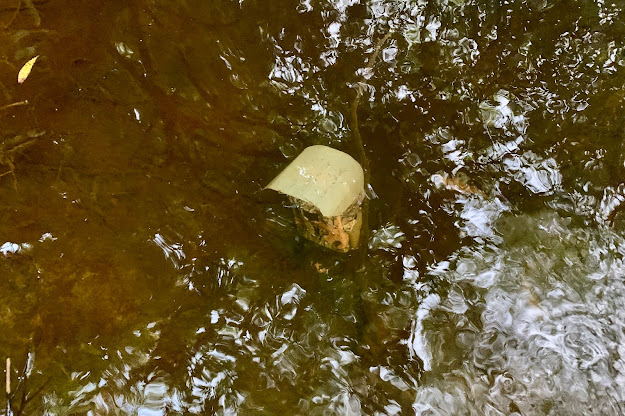At first I wasn't sure what was going on here. It looked as though a spider had caught another spider. But in fact it is a spider just recovering from moulting its old skin. Spiders, like other creatures with an exoskeleton, have to step out of their old skin in order to grow. The process is known as ecdysis, a word new to me. The cuticle splits along the spider's back and it slowly hauls itself out through the split. At this stage it is fragile and vulnerable and has to wait some time for its new outer layer to harden before it can get on with life.
The same process, described by the same word, occurs when a dragonfly emerges from a nymph. You can watch a time-lapse sequence here of a Mexican red-kneed tarantula moulting (not a common species in Newcastle, fortunately). There is a clearer video of a wolf spider moult here.





















































